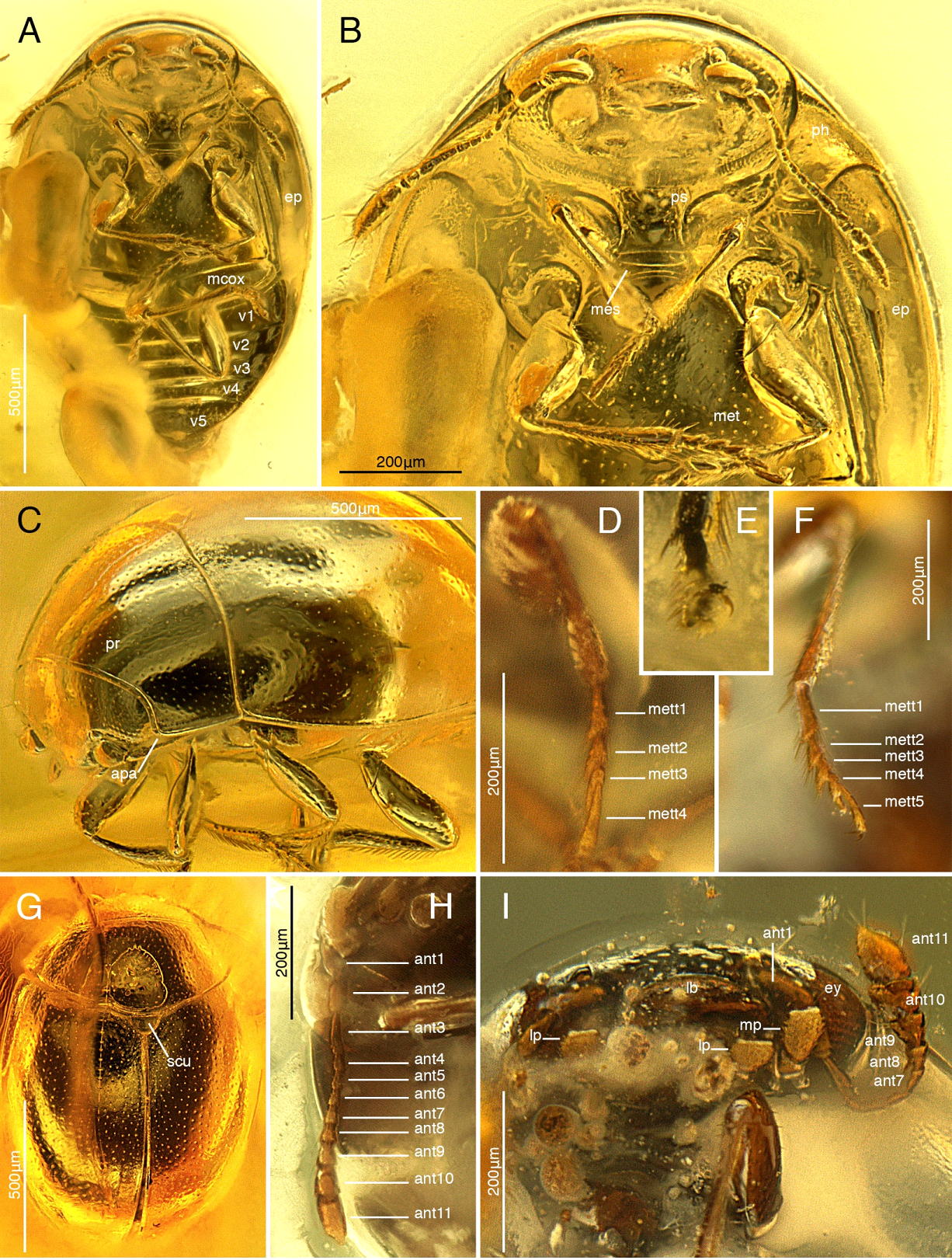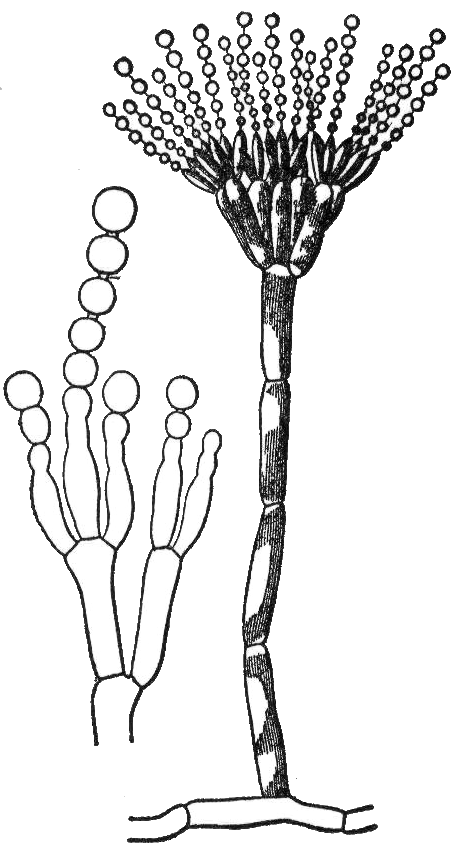|
Cyclaxyra
''Cyclaxyra'' is a genus of cucujoid beetles in the family Cyclaxyridae, and the sole extant genus in the family, others being known only from fossils.Gimmel, M.L., Szawaryn K., Cai C. & Leschen R.A.B. (2019) Mesozoic sooty mould beetles as living relicts in New Zealand. Proc. R. Soc. B, DOI:10.1098/rspb.2019.2176 There are two described species in ''Cyclaxyra'', found on the North Island, South Island, and Stewart Island of New Zealand. It is an inhabitant of New Zealand's sooty mould habitat and are mycophagous, feeding on spores, conidia, and hyphae. ''Cyclaxyra'' has been treated as part of the family Phalacridae in the past, but is now considered the only living genus of the family Cyclaxyridae. Fossil genera include '' Neolitochropus'' from Eocene aged Bitterfeld amber in Germany and '' Electroxyra'' (formerly considered a member of ''Cyclaxyra'') from Cenomanian aged Burmese amber from Myanmar. Species These two species belong to the genus ''Cyclaxyra'': * ''Cyclaxyra jeli ... [...More Info...] [...Related Items...] OR: [Wikipedia] [Google] [Baidu] |
Cyclaxyridae
Cyclaxyridae are a family of beetles in the superfamily Cucujoidea. The only living genus is '' Cyclaxyra'', with two species endemic to New Zealand. Other species have been named from fossils. They are also known as sooty mould beetles due to the association of ''Cyclaxyra'' with sooty mould. The extant species are mycophagous, feeding on spores, conidia, and hyphae. Genera * '' Cyclaxyra'' Broun, 1893, New Zealand, recent ** '' Cyclaxyra jelineki'' Gimmel, 2009 ** '' Cyclaxyra politula'' (Broun, 1881) * †'' Electroxyra'' Gimmel, Szawaryn, Cai and Leschen, 2019 ** ''Electroxyra cretacea'' (Wu in Wu, Li and Ding, 2018) Burmese amber, Myanmar, Late Cretaceous ( Cenomanian) * †'' Pacyclaxyra'' Tihelka, Huang and Cai, 2021 ** ''Pacyclaxyra azari'' Tihelka, Huang and Cai, 2021 Burmese amber, Myanmar, Cenomanian * †'' Neolitochropus'' Lyubarsky and Perkovsky, 2016 ** ''Neolitochropus hoffeinsorum'' Lyubarsky & Perkovsky, 2016 Bitterfeld amber, Rovno amber, Baltic amber, Europe, ... [...More Info...] [...Related Items...] OR: [Wikipedia] [Google] [Baidu] |
Cyclaxyra Jelineki
''Cyclaxyra jelineki'' is a species of cucujoid beetle in the family Cyclaxyridae Cyclaxyridae are a family of beetles in the superfamily Cucujoidea. The only living genus is ''Cyclaxyra'', with two species endemic to New Zealand. Other species have been named from fossils. They are also known as sooty mould beetles due to the .... It is endemic to New Zealand, found on the North Island, South Island, and Stewart Island. References Cucujoidea {{cucujoidea-stub ... [...More Info...] [...Related Items...] OR: [Wikipedia] [Google] [Baidu] |
Cyclaxyra Politula
''Cyclaxyra politula'' is a species of cucujoid beetle in the family Cyclaxyridae Cyclaxyridae are a family of beetles in the superfamily Cucujoidea. The only living genus is ''Cyclaxyra'', with two species endemic to New Zealand. Other species have been named from fossils. They are also known as sooty mould beetles due to the .... It is endemic to New Zealand, found on the North Island, South Island, and Stewart Island. References Cucujoidea Beetles described in 1881 Taxa named by Thomas Broun {{cucujoidea-stub ... [...More Info...] [...Related Items...] OR: [Wikipedia] [Google] [Baidu] |
Sooty Mold
Sooty mold (also spelled sooty mould) is a collective term for different Ascomycete fungi, which includes many genera, commonly '' Cladosporium'' and '' Alternaria''. It grows on plants and their fruit, but also environmental objects, like fences, garden furniture, stones, and even cars. The mold benefits from either a sugary exudate produced by the plant or fruit, or honeydew-secreting insects or sap suckers the plant may be infested by. Sooty mold itself does little if any harm to the plant. Treatment is indicated when the mold is combined with insect infestation. Description Sooty mold is a collective, self-descriptive term for a number of different fungi; it is a black, powdery coating adhering to plants and their fruit or environmental objects. Biology The ecology of the different species, their interactions, relationship to the host are little understood. A chance observation of a '' Microcyclospora tardicrescens'' inhibiting the growth of the fruit pathogen '' Colleto ... [...More Info...] [...Related Items...] OR: [Wikipedia] [Google] [Baidu] |
Fungivore
Fungivory or mycophagy is the process of organisms consuming fungi. Many different organisms have been recorded to gain their energy from consuming fungi, including birds, mammals, insects, plants, amoebas, gastropods, nematodes, bacteria and other fungi. Some of these, which only eat fungi, are called fungivores whereas others eat fungi as only part of their diet, being omnivores. Animals Mammals Many mammals eat fungi, but only a few feed exclusively on fungi; most are opportunistic feeders and fungi only make up part of their diet. At least 22 species of primate, including humans, bonobos, colobines, gorillas, lemurs, macaques, mangabeys, marmosets and vervet monkeys are known to feed on fungi. Most of these species spend less than 5% of the time they spend feeding eating fungi, and fungi therefore form only a small part of their diet. Some species spend longer foraging for fungi, and fungi account for a greater part of their diet; buffy-tufted marmosets spend up to 1 ... [...More Info...] [...Related Items...] OR: [Wikipedia] [Google] [Baidu] |
Conidium
A conidium ( ; ), sometimes termed an asexual chlamydospore or chlamydoconidium (), is an asexual, non- motile spore of a fungus. The word ''conidium'' comes from the Ancient Greek word for dust, ('). They are also called mitospores due to the way they are generated through the cellular process of mitosis. The two new haploid cells are genetically identical to the haploid parent, and can develop into new organisms if conditions are favorable, and serve in biological dispersal. Asexual reproduction in ascomycetes (the phylum Ascomycota) is by the formation of conidia, which are borne on specialized stalks called conidiophores. The morphology of these specialized conidiophores is often distinctive between species and, before the development of molecular techniques at the end of the 20th century, was widely used for identification of (''e.g.'' '' Metarhizium'') species. The terms microconidia and macroconidia are sometimes used. Conidiogenesis There are two main types of c ... [...More Info...] [...Related Items...] OR: [Wikipedia] [Google] [Baidu] |
Hypha
A hypha (; ) is a long, branching, filamentous structure of a fungus, oomycete, or actinobacterium. In most fungi, hyphae are the main mode of vegetative growth, and are collectively called a mycelium. Structure A hypha consists of one or more cells surrounded by a tubular cell wall. In most fungi, hyphae are divided into cells by internal cross-walls called "septa" (singular septum). Septa are usually perforated by pores large enough for ribosomes, mitochondria, and sometimes nuclei to flow between cells. The major structural polymer in fungal cell walls is typically chitin, in contrast to plants and oomycetes that have cellulosic cell walls. Some fungi have aseptate hyphae, meaning their hyphae are not partitioned by septa. Hyphae have an average diameter of 4–6 µm. Growth Hyphae grow at their tips. During tip growth, cell walls are extended by the external assembly and polymerization of cell wall components, and the internal production of new cell membran ... [...More Info...] [...Related Items...] OR: [Wikipedia] [Google] [Baidu] |
Phalacridae
The Phalacridae are a family of beetles commonly called the shining flower beetles, They are often found in composite flowers. They are oval-shaped, usually tan, and aboout 2 mm in length. Most species feed on fungus, although a number feed on flower heads. Worldwide there are about 638 species in 52 genera. The oldest possible record of the family is a specimen from Spanish amber Spanish might refer to: * Items from or related to Spain: **Spaniards are a nation and ethnic group indigenous to Spain **Spanish language, spoken in Spain and many Latin American countries **Spanish cuisine Other places * Spanish, Ontario, Cana ..., dating to the Albian stage of the Early Cretaceous. Taxonomy This family includes the following subfamily: * '' Phaenocephalinae'' Matthews, 1899 * '' Phalacrinae'' Leach, 1815 Genera within this family include: * ''Phaenocephalus''-group ** '' Phaenocephalus'' Wollaston, 1873 ** '' Phalacrinus'' Blackburn, 1891 ** '' Ranomafanacrinus'' Gimmel ... [...More Info...] [...Related Items...] OR: [Wikipedia] [Google] [Baidu] |
Bitterfeld Amber
The Baltic region is home to the largest known deposit of amber, called Baltic amber or succinite. It was produced sometime during the Eocene epoch, but exactly when is controversial. It has been estimated that these forests created more than 100,000 tons of amber. Today, more than 90% of the world's amber comes from Kaliningrad Oblast of Russia. It is a major source of income for the region; the local Kaliningrad Amber Combine extracted 250 tonnes of it in 2014, 400 tonnes in 2015. "Baltic amber" was formerly thought to include amber from the Bitterfeld brown coal mines in Saxony ( Eastern Germany). Bitterfeld amber was previously believed to be only 20–22 million years old (Miocene), but a comparison of the animal inclusions in 2003 suggested that it was possibly Baltic amber that was redeposited in a Miocene deposit. Further study of insect taxa in the ambers has shown Bitterfeld amber to be from the same forest as the Baltic amber forest, but separately deposited from a ... [...More Info...] [...Related Items...] OR: [Wikipedia] [Google] [Baidu] |
Burmese Amber
Burmese amber, also known as Burmite or Kachin amber, is amber from the Hukawng Valley in northern Myanmar. The amber is dated to around 100 million years ago, during the latest Albian to earliest Cenomanian ages of the mid-Cretaceous period. The amber is of significant palaeontological interest due to the diversity of flora and fauna contained as inclusions, particularly arthropods including insects and arachnids but also birds, lizards, snakes, frogs and fragmentary dinosaur remains. The amber has been known and commercially exploited since the first century AD, and has been known to science since the mid-nineteenth century. Research on the deposit has attracted controversy due to its alleged role in funding internal conflict in Myanmar and hazardous working conditions in the mines where it is collected. Geological context, depositional environment and age The amber is found within the Hukawng Basin, a large Cretaceous- Cenozoic sedimentary basin within northern Myanmar. ... [...More Info...] [...Related Items...] OR: [Wikipedia] [Google] [Baidu] |




